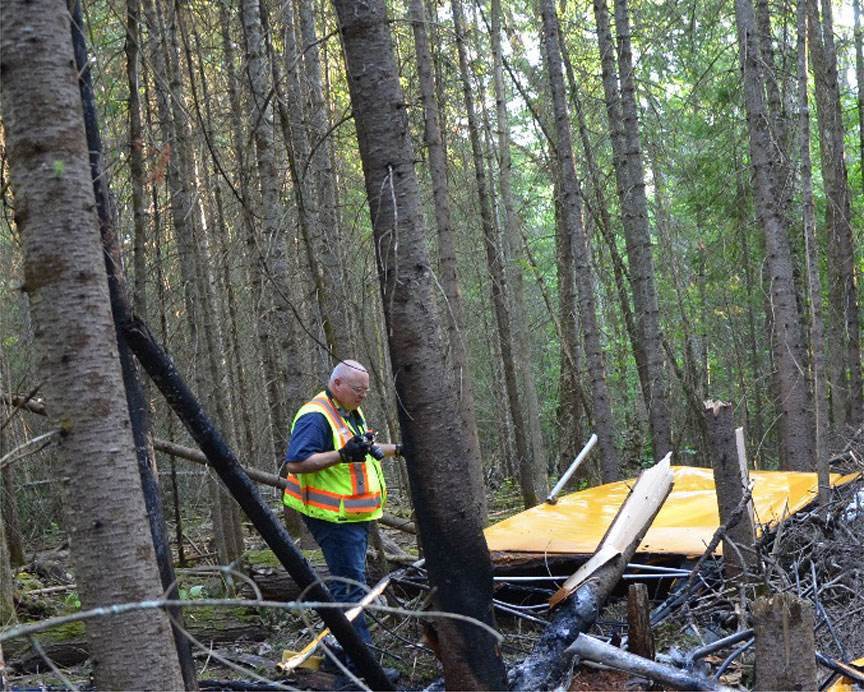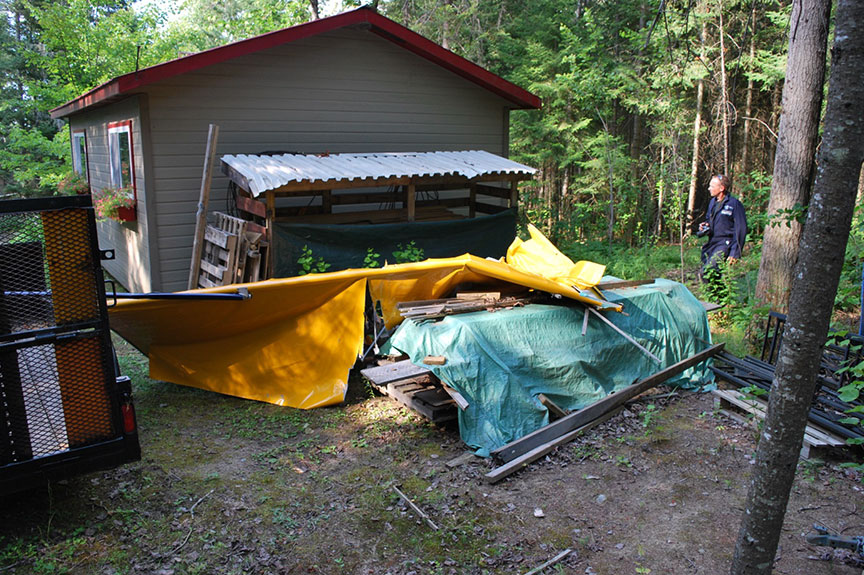In-flight separation of right wing
Quad City Challenger II (advanced ultralight), C-IGKT
North Bay, Ontario, 14.3 nm E
Quad City Challenger II (advanced ultralight), C-IGKT
North Bay, Ontario, 14.3 nm E
The occurrence
On , a privately operated Quad City Challenger II advanced ultralight aircraft was en route from North Bay to Rockcliffe, Ontario. At approximately 1800 feet above sea level, the right wing separated from the aircraft. The aircraft crashed in the trees near a cottage on Talon Lake, Ontario, and was destroyed by a post-impact fire. The single occupant was fatally injured.
Safety communications
Safety advisories
Aviation Safety Advisory A18O0106-D1-A1: Quad City Challenger II Advanced Ultralight – Bracket Failure
Media materials
News release
Investigation report: July 2018 in-flight breakup near Talon Lake, Ontario
Read the news release
Deployment notice
TSB deploys a team of investigators to an ultralight aircraft accident near North Bay, Ontario
The Transportation Safety Board of Canada (TSB) is deploying a team of investigators to an air accident involving a Quad City Challenger II ultralight aircraft near North Bay, Ontario. The TSB will gather information and assess the occurrence.
Investigation information
Download high-resolution photos from the TSB Flickr page.
Class of investigation
This is a class 4 investigation. These investigations are limited in scope, and while the final reports may contain limited analysis, they do not contain findings or recommendations. Class 4 investigations are generally completed within 220 days. For more information, see the Policy on Occurrence Classification.
TSB investigation process
There are 3 phases to a TSB investigation
- Field phase: a team of investigators examines the occurrence site and wreckage, interviews witnesses and collects pertinent information.
- Examination and analysis phase: the TSB reviews pertinent records, tests components of the wreckage in the lab, determines the sequence of events and identifies safety deficiencies. When safety deficiencies are suspected or confirmed, the TSB advises the appropriate authority without waiting until publication of the final report.
- Report phase: a confidential draft report is approved by the Board and sent to persons and corporations who are directly concerned by the report. They then have the opportunity to dispute or correct information they believe to be incorrect. The Board considers all representations before approving the final report, which is subsequently released to the public.
For more information, see our Investigation process page.
The TSB is an independent agency that investigates air, marine, pipeline, and rail transportation occurrences. Its sole aim is the advancement of transportation safety. It is not the function of the Board to assign fault or determine civil or criminal liability.

